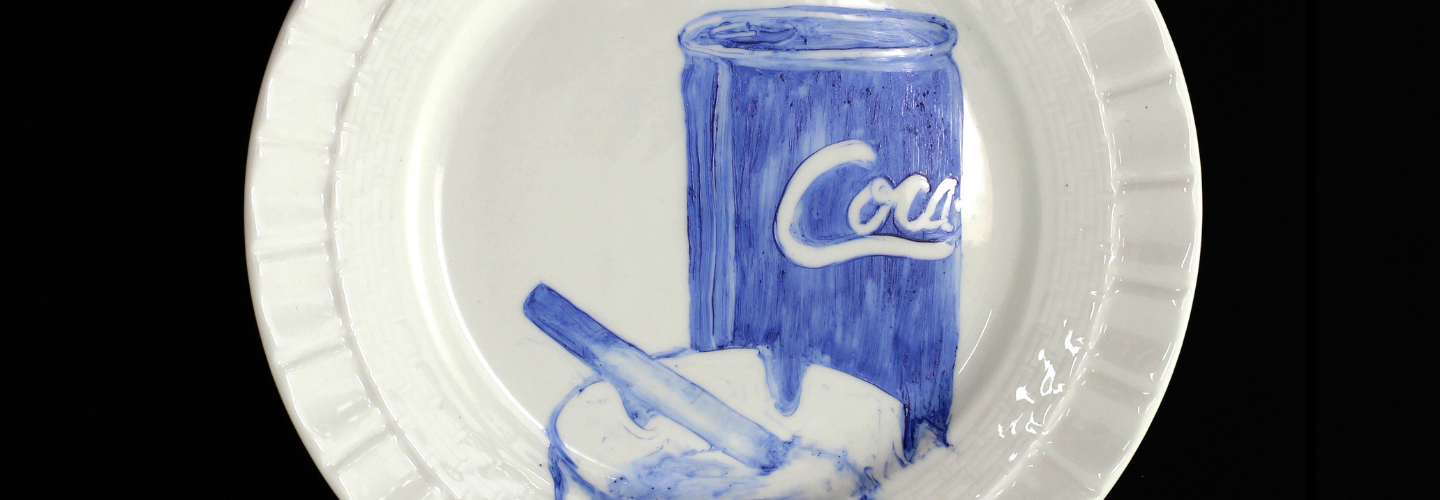The Last Supper: 600 Plates Illustrating Final Meals of U.S. Death Row Inmates is an installation by Julie Green, Professor of Art at Oregon State University.
For 15 years, Julie Green has painted images of death row inmates' last meal requests in cobalt blue mineral paint onto second-hand ceramic plates. She intends to continue making 50 plates per year until capital punishment is abolished.
Every plate in “The Last Supper” is accompanied by a description of the meal request, date and state -- but no more. Without naming the inmate or crime, the meals highlight the human dimension of capital punishment. The plates function as anonymous portraits that when grouped together suggest a memorial to lost life on a mass scale. Click here to see the plates.
Individually, each painted plate functions as both a portrait and a still life steeped in the traditions of painting and fine craft. The influences of Dutch Delftware and Spanish still life painting can be traced in Green’s blue-tinted illustrations. Collectively, The Last Supper is a conceptual piece, part ritual and part performance. The Last Supper underscores the practice of offering a last meal before execution, while exposing the uneven practices and policies of the state-administered capital punishment system.
As prisoners condemned to death, Green’s subjects are deprived of the most basic right to life. In illustrating their final opportunities to exercise their free will, Green represents a glimmer of humanity in the midst of a seemingly austere criminal justice system.
See recent media coverage for the Block Museum's presentation of The Last Supper
The Block Museum presentation of The Last Supper is being overseen by Curator of Special Projects, Elliot Reichert. Funding for the project has been generously provided by Chicago artist Angela Lustig and Northwestern alumnus Dale E. Taylor. Taylor is the president and CEO of AbelsonTaylor.
Image: Illinois 21 January 1998 Coke Classic and Camel
Opening Day Program
Saturday, May 9, 2pm
Fisk Hall, room 217
The Block Museum welcomes Julie Green, who will present The Last Supper: 600 Plates Illustrating Final Meals of U.S. Death Row Inmates. She will discuss her process and how the project relates to her larger artistic concerns. Following this talk, Green, Professor of Art at Oregon State University, will be joined in conversation by Rob Owen, Clinical Professor of Law at Northwestern, and Elliot Reichert, Curator of Special Projects at the Block, to discuss issues of representation, the criminal justice system, and social justice.
Seen from Inside: Perspectives on Capital Punishment
Tuesday, May 19, 6pm
In partnership with the Center for Capital Defense and the Center on Wrongful Convictions at Northwestern University School of Law, the Block will host a series of acts exploring various perspectives on capital punishment—an exhibition overview by Block Curator of Special Projects, Elliot Reichert, followed by a capital case closing argument enacted by a death penalty defense attorney, a conversation with a former prisoner exonerated from death row, and insights from a family member of a homicide victim.
When You CAN’T Shake It Off
Wednesday, May 27, 6pm
A cell phone camera captures the death of Eric Garner. White men toting assault rifles film confrontations with police officers over their right to openly carry firearms. A video of a cop lip-synching to Taylor Swift goes viral. Join Will Schmenner, Block Cinema interim curator, and Harvey Young, Northwestern University associate professor, as they discuss the role and use of social media in creating a national conversation about race, law, and the limits of police power. How does civil resistance operate in the Internet era?
